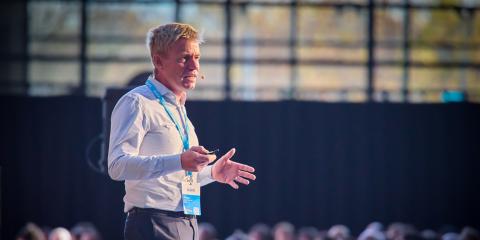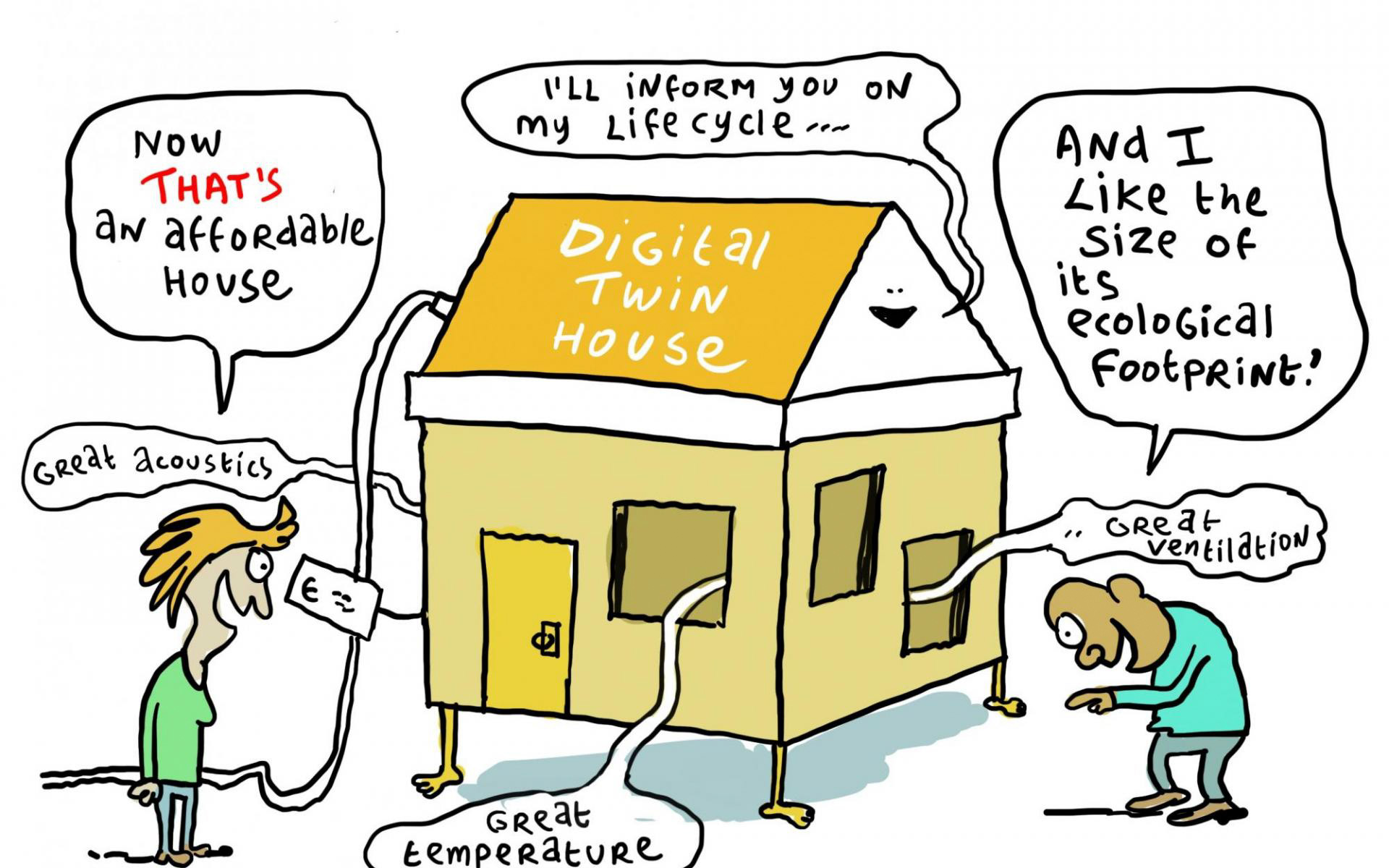Better and more sustainable living: digital twins as a foundation for 'active homes'

Living in 'active homes' is not only more sustainable, but also healthier and more comfortable. But in order to switch en masse to this innovative housing concept, the use of digital twins is indispensable. This way, the performance of the building can be optimally adapted to the needs of the residents at all times. This was explained by Koen Maertens of Duco Ventilation and Sun Control at the annual Symposium of Flanders Make.
Passive houses are well known by now, but what exactly does the concept of an 'active house' or 'Active House' stand for? "Such a house interacts very actively with its outdoor environment to optimise indoor living conditions," Koen Maertens, R&D director of Duco Ventilation and Sun Control in Veurne, told us. "Among other things, it ensures ideal energy consumption, air quality, temperature... At the same time, it has no negative impact on the environment. The trend towards active homes is part of a broad transformation of the building sector."
The objective of active homes thus focuses on three domains: health, comfort and sustainability. To meet the challenges in these domains, such homes use technology such as sensors and controllers, as made by Duco and others. The homes are also built with ecological, bio-based materials.
Several unique active housing concepts have already been developed, of different dimensions. One large-scale project is the 'IBR Future Complex' in the Chinese city of Shenzhen, a bulky building with offices, research labs, an auditorium and space for computer servers. In Ukraine, on the other hand, the Geodesic.Life project created a small - somewhat futuristic-looking - housing concept.

Construction in factories
"However, the big challenge lies in mass production, building many affordable buildings in a short time," Maertens argued. Among other things, he referred to the great need for starter homes in the Netherlands, where it has been calculated that 76,000 such homes should be added every year.
"With traditional techniques, such as building houses on site with bricks and concrete, we are not going to get there. That's too slow, has too high an ecological footprint and you can't build in ecologically sensitive areas with that."
So how will we build in the future? "In factories, with bio-based materials that have no impact on nature, so that the buildings have their place even in more sensitive natural areas." According to Maertens, it is possible to construct a complete house in the factory within two days, obviously after a sophisticated design process has happened beforehand. The various components are then loaded onto a truck and taken to the site for the dwelling. In just one day, the building can then be assembled there.
Digital twin with four layers
Throughout the design process, a digital twin or digital twin forms the real foundation of the house. A digital twin is a virtual representation of a physical product, a digital doppelganger that behaves just like the physical system or like a certain aspect of that system, giving you a minute picture of its efficacy.
With the digital twin, you can predict in advance in detail how the active house will react to certain influences. For example, when deciding on the size of windows, you can find out how much sunlight they will let in and how this will affect the indoor temperature, in the different seasons. In this, a digital twin is built in four layers, linked to four key factors: air quality, occupancy, thermal (heat) and acoustics.
Adapting to changing needs
"But in general, of course, people don't buy a house for a few years, often they stay there for about 30 years, with circumstances changing." Active houses are modular, where the size of the house or of certain rooms can be changed relatively easily. For example, you can add rooms for a new family member, create an extra workspace or expand your kitchen. Things can obviously change in the outdoor environment too, for example trees growing to the point where they start blocking more and more sunlight.
To ensure that the performance of the house is maintained at all times, adjustments need to be made in areas such as ventilation, sunlight or energy consumption. These adjustments are best made using the same digital twin.
"The digital twin is updated throughout the life cycle of the house," says Maertens. "It tracks the performance and health of the smart home until it is dismantled at the end of its life and the components are reused or recycled."
A digital twin is also an important tool to convince companies to invest in designing active homes. "Before you can build active homes, you have to make a significant investment in setting up the necessary factories. Digital twins provide the necessary certainty in making such investments. Thus, they are crucial facilitators that streamline the transition to active homes."
This presentation was part of Flanders Make's Symposium, the annual event where (inter)national speakers present the technology trends that will shape the future of the industry. The 2022 edition focused on the path to "a sustainable, digital and competitive industry".
